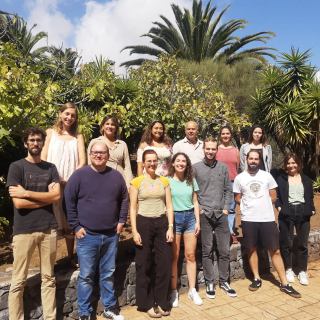Bibcode
Pérez-González, Pablo G.; Barro, Guillermo; Annunziatella, Marianna; Costantin, Luca; García-Argumánez, Ángela; McGrath, Elizabeth J.; Mérida, Rosa M.; Zavala, Jorge A.; Arrabal Haro, Pablo; Bagley, Micaela B.; Backhaus, Bren E.; Behroozi, Peter; Bell, Eric F.; Bisigello, Laura; Buat, Véronique; Calabrò, Antonello; Casey, Caitlin M.; Cleri, Nikko J.; Coogan, Rosemary T.; Cooper, M. C.; Cooray, Asantha R.; Dekel, Avishai; Dickinson, Mark; Elbaz, David; Ferguson, Henry C.; Finkelstein, Steven L.; Fontana, Adriano; Franco, Maximilien; Gardner, Jonathan P.; Giavalisco, Mauro; Gómez-Guijarro, Carlos; Grazian, Andrea; Grogin, Norman A.; Guo, Yuchen; Huertas-Company, Marc; Jogee, Shardha; Kartaltepe, Jeyhan S.; Kewley, Lisa J.; Kirkpatrick, Allison; Kocevski, Dale D.; Koekemoer, Anton M.; Long, Arianna S.; Lotz, Jennifer M.; Lucas, Ray A.; Papovich, Casey; Pirzkal, Nor; Ravindranath, Swara; Somerville, Rachel S.; Tacchella, Sandro; Trump, Jonathan R.; Wang, Weichen; Wilkins, Stephen M.; Wuyts, Stijn; Yang, Guang; Aaron Yung, L. Y.
Referencia bibliográfica
The Astrophysical Journal
Fecha de publicación:
3
2023
Revista
Número de citas
139
Número de citas referidas
117
Descripción
The new capabilities that JWST offers in the near- and mid-infrared (IR) are used to investigate in unprecedented detail the nature of optical/near-IR-faint, mid-IR-bright sources, with HST-dark galaxies among them. We gather JWST data from the CEERS survey in the Extended Groth Strip, jointly with HST data, and analyze spatially resolved optical-to-mid-IR spectral energy distributions to estimate photometric redshifts in two dimensions and stellar population properties on a pixel-by-pixel basis for red galaxies detected by NIRCam. We select 138 galaxies with F150W - F356W > 1.5 mag and F356W < 27.5 mag. The nature of these sources is threefold: (1) 71% are dusty star-forming galaxies (SFGs) at 2 < z < 6 with $9\lt \mathrm{log}{M}_{\star }/{M}_{\odot }\lt 11$ and a variety of specific SFRs (<1 to >100 Gyr-1); (2) 18% are quiescent/dormant (i.e., subject to reignition/rejuvenation) galaxies (QGs) at 3 < z < 5, with $\mathrm{log}{M}_{\star }/{M}_{\odot }\sim 10$ and poststarburst mass-weighted ages (0.5-1.0 Gyr); and (3) 11% are strong young starbursts with indications of high equivalent width emission lines (typically, [O III]+Hβ) at 6 < z < 7 (XELG-z6) and $\mathrm{log}{M}_{\star }/{M}_{\odot }\sim 9.5$ . The sample is dominated by disk-like galaxies with remarkable compactness for XELG-z6 (effective radii smaller than 0.4 kpc). Large attenuations in SFGs, 2 < A(V) < 5 mag, are found within 1.5 times the effective radius, approximately 2 kpc, while QGs present A(V) ~ 0.2 mag. Our SED-fitting technique reproduces the expected dust emission luminosities of IR-bright and submillimeter galaxies. This study implies high levels of star formation activity between z ~ 20 and z ~ 10, where virtually 100% of our galaxies had already formed 108 M ⊙, 60% had assembled 109 M ⊙, and 10% up to 1010 M ⊙ (in situ or ex situ).
Proyectos relacionados

Huellas de la Formación de las Galaxias: Poblaciones estelares, Dinámica y Morfología
Bienvenida a la página web del g rupo de investigación Traces of Galaxy Formation. Somos un grupo de investigación amplio, diverso y muy activo cuyo objetivo principal es entender la formación de galaxias en el Universo de una manera lo más completa posible. Con el estudio detellado de las poblaciones estelares como bandera, estamos constantemente
Anna
Ferré Mateu